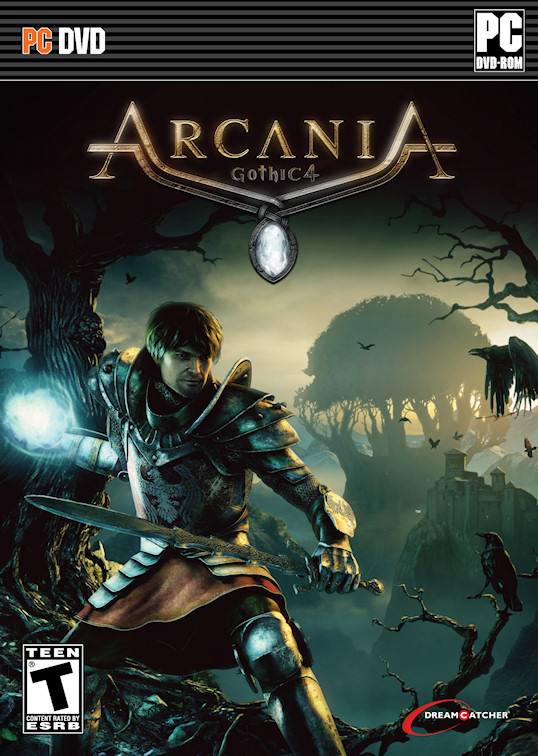E3 2010: Arcania: Gothic 4 Preview
-
Category: PreviewsHits: 15562

Article Index
Page 1 of 2
Confession time! Gothic and Gothic II (minus its Night of the Raven expansion pack) are the only two games I'm familiar with in the series, and even then, I've never played either one to completion. I'm sure Gothic II would have sucked me in a bit more had the add-on not taken a couple of years to be localized into English, but unfortunately I'll probably never know at this point. I realize that probably makes some of you shake your head at me in disgust, but there are just too many other games vying for my time these days. Despite not being all that familiar with the franchise, Arcania: Gothic 4 was one of several games that I definitely wanted to check out at this year's E3. When I stopped by the booth, DreamCatcher producer Bryan Cook treated me to a brief demonstration, and then he set me loose on a playable build of the game. You've probably already read a dozen articles covering the hands-off demonstration, so I'll do my best to spotlight the lesser known information that I gathered during the 15 minutes or so of hands-on time that I nabbed.
Character creation is pretty simplistic, as there are no races or classes to pick from. In fact, you're not even allowed to play as a female protagonist. Beyond that, there are eight skill trees to allocate points to, including Mettle (melee attacks, melee power, stamina regeneration), Discipline (melee combos, health, melee power), Vigour (shield attacks, health, stamina), Precision (ranged attacks, mana, ranged power), Stealth (flanking/backstab attacks, health, ranged power), Zeal (fire-based spells, magic power, mana regeneration), Serenity (cold-based spells, mana, mana regeneration), and Dominance (electricity-based spells, magic power, mana). Three skill points are gained with each character level increase, and a total of sixteen points can be spent within each skill tree. Each skill point increase requires an equal number of levels, however, so you won't max out any of your skill trees until at least level 16.
For each point that you allocate to a skill tree, you'll gain small percentage bonuses to primary character statistics (such as mana and mana regeneration, as listed above). Additionally, abilities are unlocked at particular increments, depending on the skill tree. For example, allocating four points into the Discipline tree unlocks the "Rain of Blows" combo attack, thirteen points into Stealth unlocks the "Ambush" ability, and sixteen points into Dominance unlocks the "Storm of Torment" spell.
The initial section of the game takes place on a tutorial island called Feschyr, though the second island, Argaan, will house a vast majority of the game's content. There are six unique cultures that we'll be dealing with in the game (the fishing village at Feschyr, the trappers that inhabit the area around the Cleave Maiden tavern, Tooshoo, Stewark, Setariff, and Thorniara), and each one features its own set of beliefs, attitudes, and equipment. Navigating the game's two islands is aided by a minimap and quest markers, though both aids can be turned off if you prefer to explore on your own volition. Exploration seems to work pretty seamlessly in the game, too, since there are absolutely no loading screens (aside from when you move between the two islands). However, despite being labeled as an "open world" RPG, I'd actually call it a "gated world". Not far into the game, you'll discover that higher level areas are inaccessible until you've unlocked them via the main quest or side quests. The areas that were available for me to explore seemed pretty interesting, though, as there are quite a few unique points of interest, a variety of different creatures to kill, some sweet-looking "dynamic" weather effects to stare at, and various mining deposits and plants to harvest for crafting.


